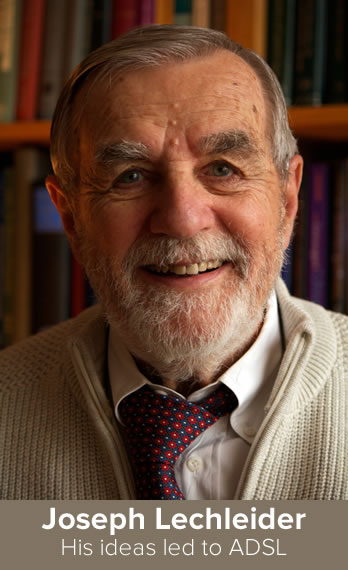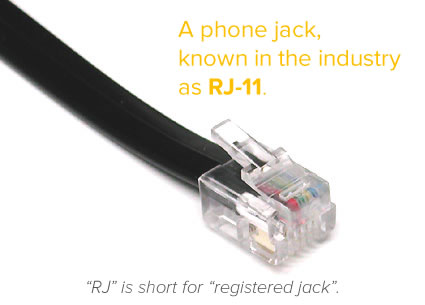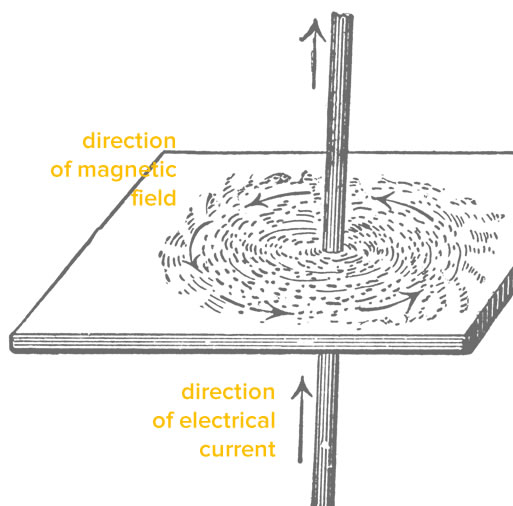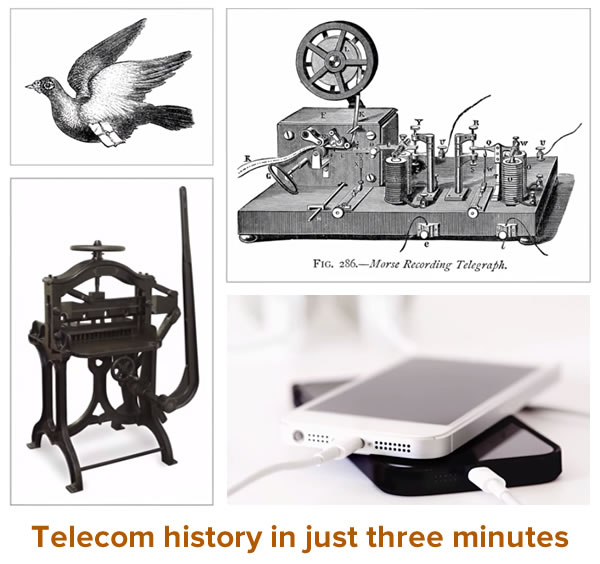RIP Joseph Lechleider, who came up with the idea behind ADSL
If you have one of these — often called a “DSL modem”, but it’s more likely to be a DSL router — in your home or office…

…then you have this engineer to thank:

This is Joseph Lechleider, who used to be an engineer at Bellcore, Bell Telephone’s research wing formed after it was broken up into the “Baby Bells”. In the late 1980s, he came up with a clever solution to a problem that came with trying to send high-speed electronic signals over ordinary copper wire and into this familiar connection:

Electricity and magnetism are bound together in interesting ways, and this connection turns up when you send a current through a wire. The current induces a magnetic field around the wire:

The tight connection between electricity and magnetism means that the reverse is true as well: put a wire into a magnetic field, and you’ll induce a current in it.
This behavior made it difficult to send high-speed signals through copper wires, which to this day often make up the “last mile” between your wireline carrier and you. The magnetic fields induced by sending signals at very high speeds create a lot of interference, which mangles the data being carried, which slows down the rate at which you receive actual usable data.
Lechleider’s solution to this problem was both simple and clever: why not make it so that downloading (getting information from the network to you) was faster than uploading (sending information from you to the network)? This arrangement reduced the interference between the upload and download channels and offered more than twice the bandwidth that transmitting and receiving at the same rate did. His idea got incorporated into what we now know as ADSL (the “A” is for asymmetric), a key part of DSL service
The “receive data much faster than you transmit it” solution is an engineer’s dream: it’s clever, and it’s cheap, because it doesn’t require much change to existing infrastructure. It meant that phone companies didn’t have to spend a lot of money to provide broadband service, and it’s how DSL became popular. As recently as the end of 2012, it was the primary means of access for almost 60% of the world’s wireline broadband subscribers.
Lechleider died at home in Philadelphia on April 18th from cancer of the esophagus. We didn’t want his contribution to telecommunications to go unnoticed.
For your work in changing wireline broadband — as well as the way we live, work, and play — we thank you, Mr. Lechleider.
HP’s history of telecom in just three minutes

